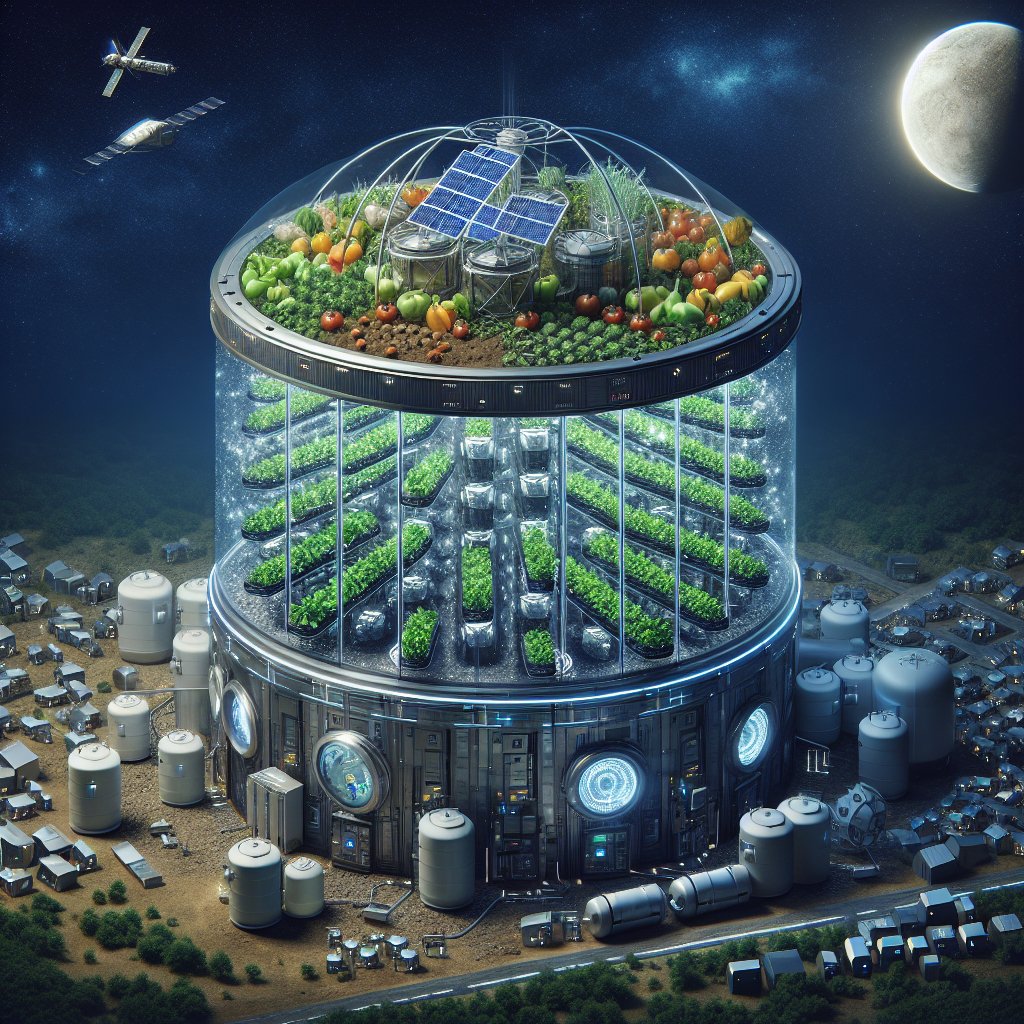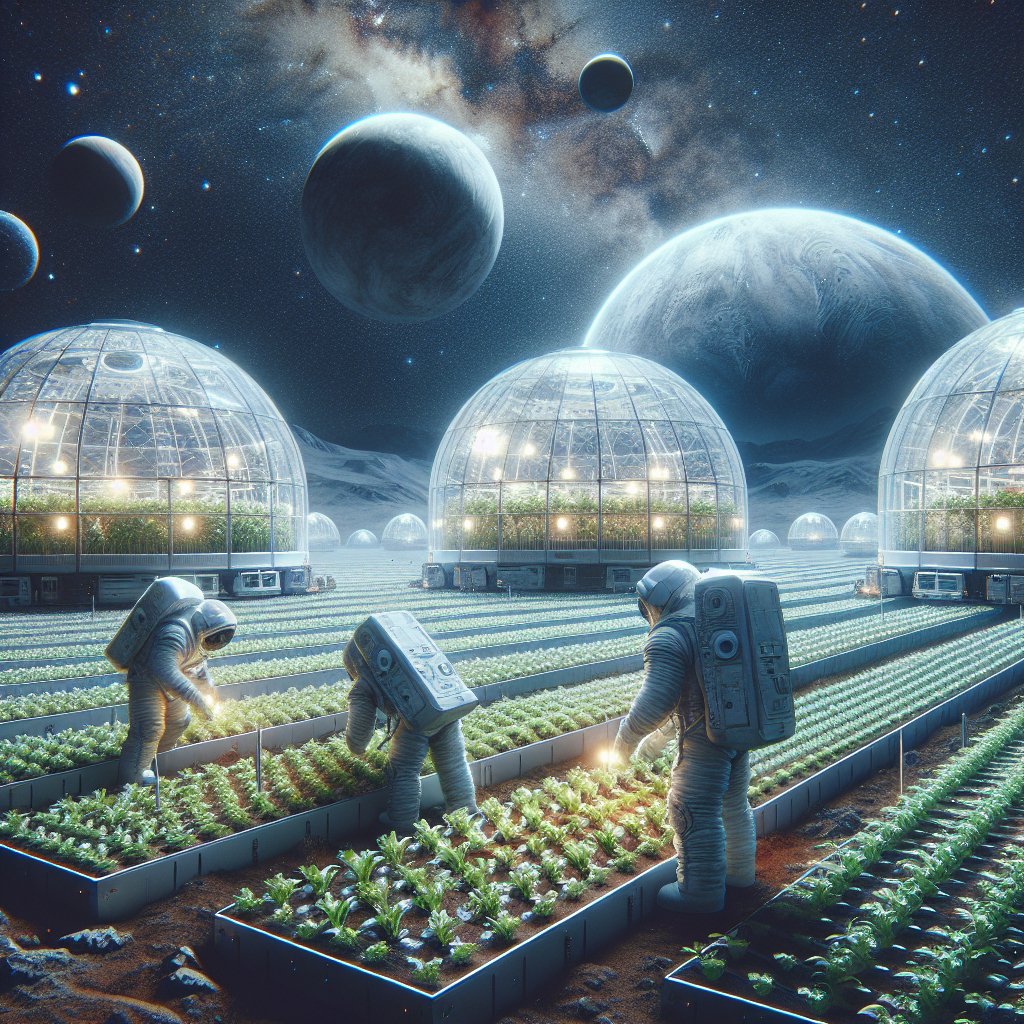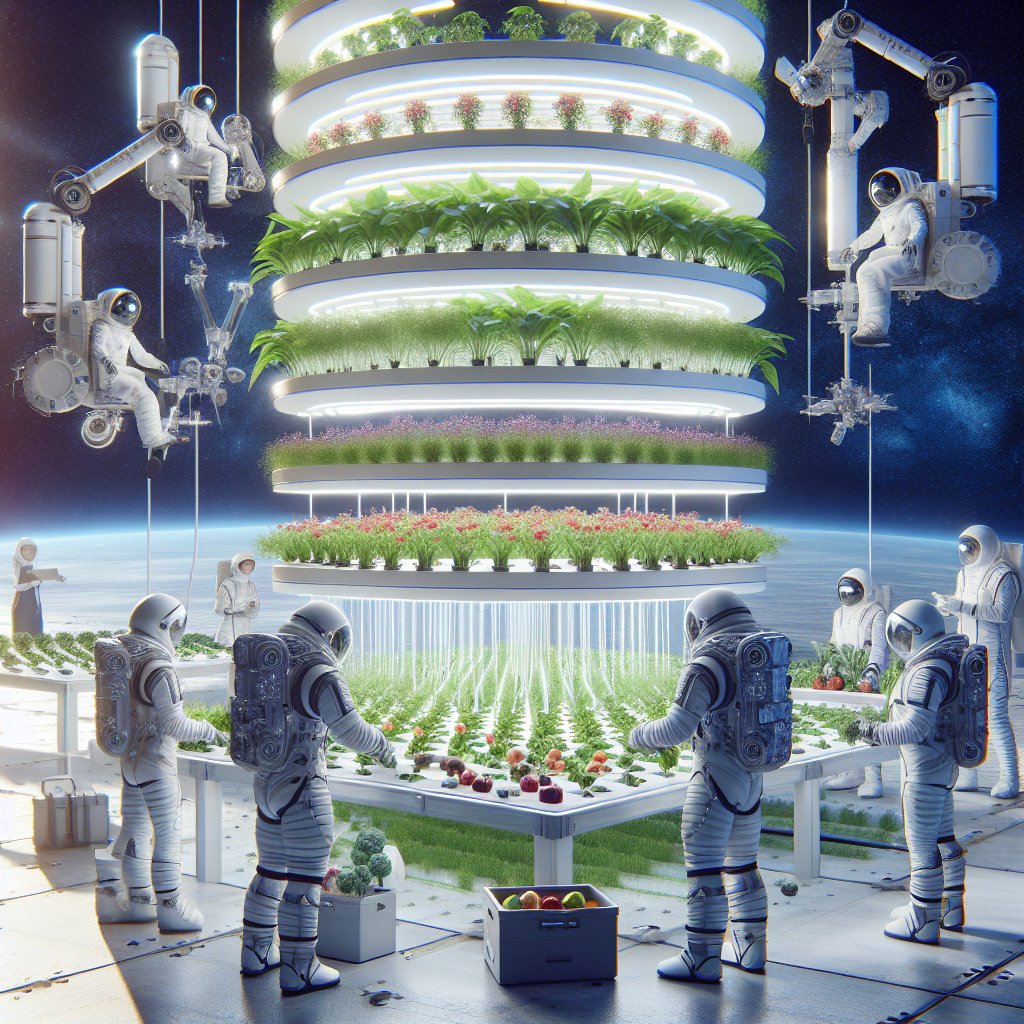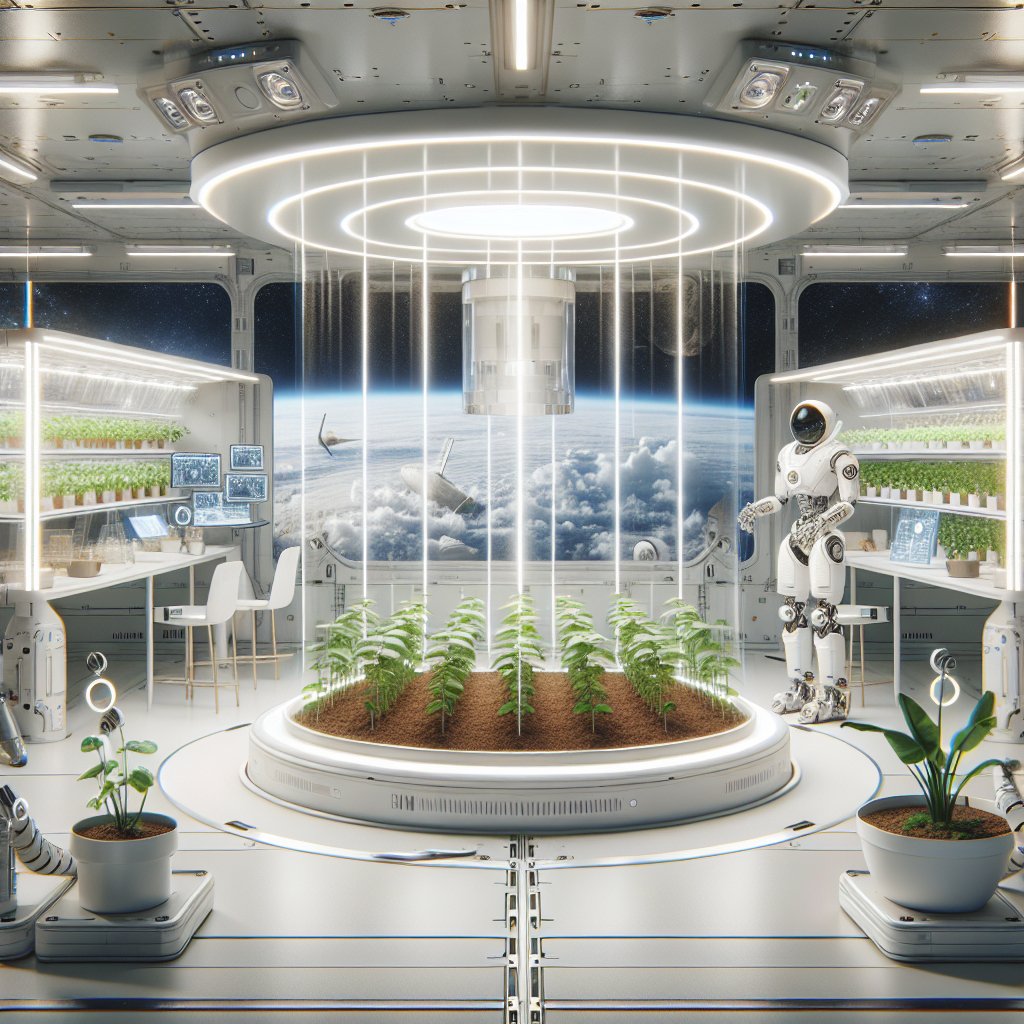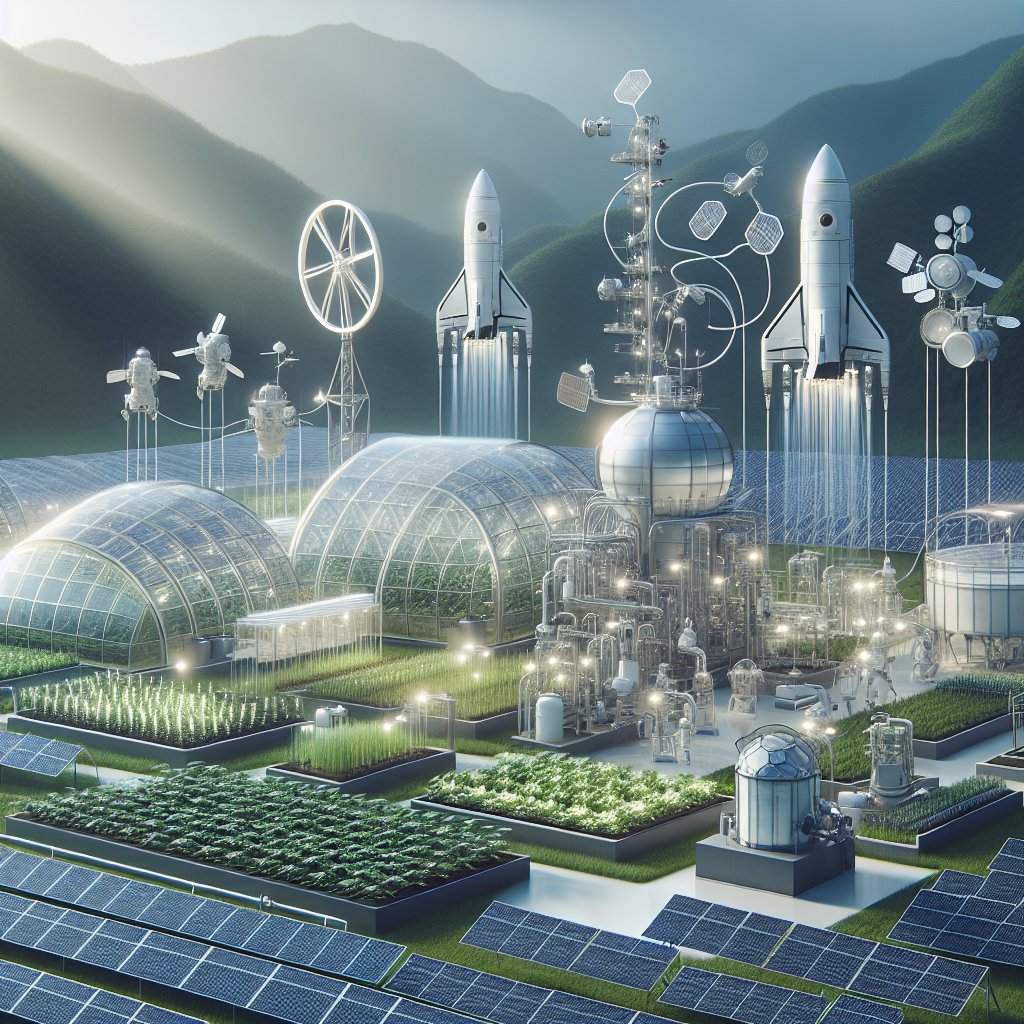Designing self-sufficient farming systems for space is a critical challenge that combines the fields of agriculture and space exploration. As humanity looks toward the stars, the need for sustainable food production in extraterrestrial environments becomes increasingly important. This article explores the innovative approaches and technologies that can be employed to create viable agricultural systems capable of supporting human life on other planets.
The Importance of Self-Sufficiency in Space Farming
Self-sufficiency in space farming is essential for long-duration missions, such as those planned for Mars or lunar bases. The vast distances involved in space travel make resupply missions impractical and costly. Therefore, astronauts must rely on locally produced food to sustain themselves. This necessity drives the development of closed-loop agricultural systems that can recycle nutrients, water, and energy, ensuring a continuous supply of food without external inputs.
Challenges of Space Agriculture
Growing food in space presents unique challenges that differ significantly from traditional farming on Earth. Some of the primary challenges include:
- Microgravity: The absence of gravity affects plant growth, nutrient uptake, and water distribution. Plants rely on gravity to orient themselves, and in microgravity, they may struggle to grow properly.
- Radiation: Space environments expose crops to higher levels of cosmic radiation, which can damage plant cells and reduce yields. Developing radiation-resistant crops or protective growing environments is crucial.
- Limited Resources: Space missions have limited water, soil, and nutrients. Efficient use of these resources is vital for successful crop production.
- Psychological Factors: The mental well-being of astronauts is essential for mission success. Access to fresh food can improve morale and provide a sense of normalcy.
Innovative Approaches to Space Farming
To address the challenges of space agriculture, researchers and engineers are exploring various innovative approaches. These methods aim to create sustainable, self-sufficient farming systems that can thrive in extraterrestrial environments.
Aeroponics and Hydroponics
Aeroponics and hydroponics are two soilless farming techniques that have gained popularity in space agriculture. Both methods allow for efficient use of water and nutrients while minimizing the need for large amounts of soil.
- Aeroponics: This method involves growing plants in a mist environment, where roots are suspended in air and periodically sprayed with nutrient-rich water. Aeroponics uses up to 90% less water than traditional farming and can produce faster growth rates.
- Hydroponics: In hydroponics, plants are grown in a nutrient solution, eliminating the need for soil. This method allows for precise control over nutrient delivery and can be adapted to various plant species.
Vertical Farming
Vertical farming is another promising approach for space agriculture. By stacking layers of crops in a controlled environment, vertical farms can maximize space utilization and increase crop yields. This method is particularly advantageous in confined spaces, such as spacecraft or lunar habitats.
Bioregenerative Life Support Systems
Bioregenerative life support systems (BLSS) integrate biological processes to create a self-sustaining environment. These systems combine plant growth with waste recycling, allowing for the continuous regeneration of air, water, and nutrients. By incorporating microorganisms and other biological components, BLSS can mimic Earth’s ecosystems, providing a stable environment for plant growth.
Research and Development Initiatives
Numerous research initiatives are underway to advance the field of space agriculture. Organizations such as NASA, the European Space Agency (ESA), and private companies are investing in technologies that will enable sustainable farming in space.
NASA’s Veggie Project
NASA’s Veggie project is a pioneering effort to grow food in space. The project has successfully grown various crops, including lettuce, radishes, and zinnias, aboard the International Space Station (ISS). These experiments provide valuable data on plant growth in microgravity and help refine techniques for future missions.
ESA’s EDEN ISS Project
The European Space Agency’s EDEN ISS project aims to develop a fully operational greenhouse for space missions. The project focuses on creating a closed-loop system that can produce food using minimal resources. By testing various crops and growing techniques in extreme conditions, the EDEN ISS project seeks to pave the way for sustainable agriculture on Mars and beyond.
Future Prospects and Implications
The successful development of self-sufficient farming systems for space has far-reaching implications, not only for space exploration but also for agriculture on Earth. The technologies and methods developed for space farming can be adapted to address challenges such as food security, resource scarcity, and climate change on our home planet.
Lessons for Earth Agriculture
Many of the innovations in space agriculture can be applied to improve farming practices on Earth. For example, vertical farming and hydroponics can help urban areas produce food more sustainably, reducing the need for transportation and minimizing environmental impact. Additionally, the focus on resource efficiency in space farming can inspire more sustainable practices in traditional agriculture.
Global Collaboration
The challenges of space agriculture require collaboration across disciplines and nations. Scientists, engineers, and agricultural experts must work together to develop solutions that can be implemented in both space and terrestrial environments. This collaboration can foster innovation and lead to breakthroughs that benefit humanity as a whole.
Conclusion
Designing self-sufficient farming systems for space is a complex but essential endeavor. As humanity prepares for long-duration missions beyond Earth, the need for sustainable food production becomes increasingly critical. By leveraging innovative approaches such as aeroponics, hydroponics, and bioregenerative life support systems, researchers are paving the way for successful space agriculture. The lessons learned from these efforts will not only support human life in space but also contribute to a more sustainable future for agriculture on Earth. As we look to the stars, the intersection of agriculture and space exploration holds the key to feeding humanity in the cosmos and beyond.
